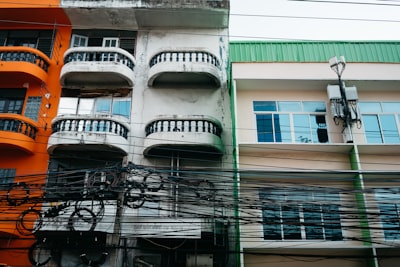Overview
Fire safety in residential buildings is a critical public health and urban planning concern in Vietnam, particularly in rapidly urbanizing areas such as Ho Chi Minh City and Hanoi. The country's dense population, narrow streets, and increasing construction of high-rise apartment blocks have heightened the risk and potential severity of residential fires. Modernization efforts and lapses in compliance with fire prevention regulations have further accentuated the challenges faced by authorities and residents alike.
Regulatory Framework
Vietnamese fire safety is governed primarily by the Law on Fire Prevention and Fighting (2001, amended 2013), enforced by the Fire Prevention and Fighting Police Department under the Ministry of Public Security. Regulations mandate fire escape routes, fire alarm and extinguishing systems, and regular safety inspections for residential and commercial buildings. Stricter requirements apply to high-rise structures, with mandatory evacuation plans and fire drills for residents.
Common Causes of Residential Fires
Residential building fires in Vietnam are frequently caused by electrical faults, unattended cooking appliances, and improper storage of flammable materials. In densely populated urban areas, illegal construction modifications—such as blocking emergency exits, adding partition walls, or using substandard materials—can exacerbate fire hazards and obstruct evacuation routes.
Challenges to Fire Safety Implementation
- Urban Density: Narrow alleyways and tightly packed buildings hinder access by fire trucks and emergency services.
- Enforcement: Underfunding and insufficient resources for inspection and enforcement allow non-compliance and dangerous alterations to persist.
- Public Awareness: Limited public education regarding fire safety procedures, evacuation protocols, and the use of fire extinguishers increases risk.
Notable Incidents and Policy Changes
Several high-profile fires in Vietnam have led to public outcry and regulatory reforms. The 2023 apartment fire in Hanoi that killed 56 people brought particular attention to issues such as illegal modifications and inadequate fire exits, resulting in stricter enforcement and prosecutions. The recurrence of deadly incidents in subsequent years underscores the need for sustained improvements in fire safety infrastructure and awareness.
Fire Safety Technologies and Best Practices
Modern firefighting technologies adopted in Vietnam include smoke detectors, fire alarms, sprinkler systems, and fire-resistant construction materials. Residential buildings are increasingly required to display publicly accessible evacuation maps and maintain fire extinguishers on each floor. Community-based fire prevention programs led by local authorities aim to increase preparedness and reduce response times to emergencies.
Conclusion
Enhancing fire safety in Vietnam’s residential buildings is an ongoing challenge that requires cooperation between government agencies, building owners, and residents. Ongoing education, rigorous enforcement of building codes, and investment in firefighting infrastructure are crucial to mitigating loss of life and property.

Comments
No comments yet. Be the first to comment!